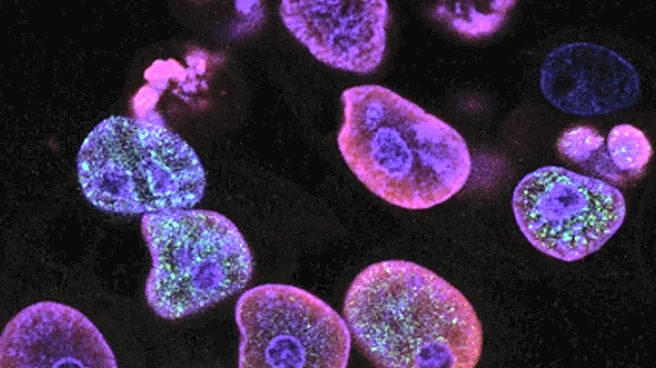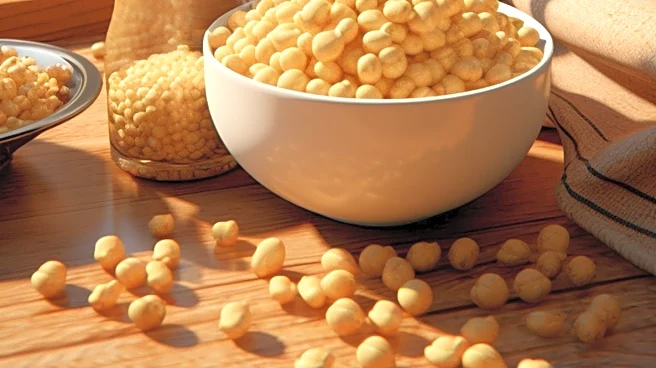What is the story about?
What's Happening?
A study published in Nature has revealed that mitochondria, the energy-producing organelles in cells, expel 'tainted' DNA, contributing to age-related inflammation. Researchers found that in aging mice with kidney inflammation, mitochondrial DNA (mtDNA) contained harmful nucleotide imbalances, prompting mitochondria to eject these fragments into the cell's cytosol. This process activates inflammatory pathways associated with aging. The study, led by Thomas Langer from the Max Planck Institute for Biology of Ageing, provides insights into the mechanisms of 'inflammageing' and the role of mitochondria in this process.
Why It's Important?
Understanding the mechanisms behind mitochondrial DNA expulsion and its role in inflammation could lead to new therapeutic strategies for age-related diseases. The study highlights the potential for targeting mitochondrial function to mitigate chronic inflammation, a key factor in aging and related health issues. This research could pave the way for interventions that improve healthspan by addressing the root causes of inflammageing, benefiting the aging population and reducing healthcare burdens.
What's Next?
Further research is needed to explore the therapeutic potential of modulating mitochondrial function to prevent or reduce age-related inflammation. Scientists may investigate the development of drugs that can correct nucleotide imbalances in mtDNA or enhance mitochondrial resilience. These findings could also inform public health strategies aimed at promoting healthy aging and preventing age-related diseases.
Beyond the Headlines
The study raises questions about the broader implications of mitochondrial health on overall well-being and longevity. It also highlights the importance of cellular health in aging and the potential for lifestyle interventions to support mitochondrial function. The research encourages a deeper exploration of the genetic and environmental factors influencing mitochondrial health.
AI Generated Content
Do you find this article useful?














